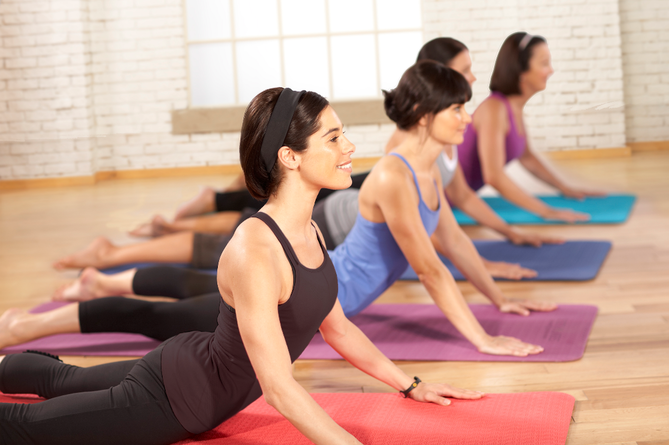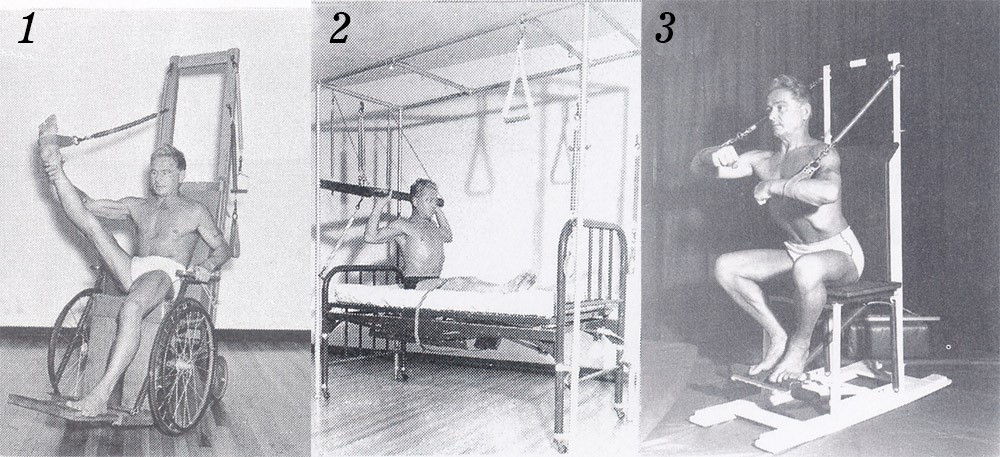 StIvesPhysiotherapy is excited to be introducing Pilates Matwork classes, run by physiotherapists, to our class timetable in 2017. The History of Pilates Pilates is named after its founder, Joseph Pilates, who was born in 1880 in Germany. He was reportedly a sickly child who suffered from rickets, asthma and rheumatic fever. His father was a prize-winning gymnast and his mother a naturopath. A family physician gave him a discarded anatomy book and as he put it, “I learned every page, every part of the body; I would move each part as I memorized it. As a child, I would lie in the woods for hours, hiding and watching the animals move, how the mother taught the young.” He was determined to overcome his weak physical state and began experimenting with a number of different methods of exercise. He practiced yoga, gymnastics, skiing, self-defence, dance, circus training and weight training. By the time he was 14 he had developed his body, strength and fitness to the point that he was modelling for anatomy charts. Pilates selected features of different exercise methods and set about developing a system that worked for him and went on to become a fitness trainer. He named his method “Contrology.” In 1912 Pilates moved to England where it is reported he became a boxer, circus performer and self-defence instructor for detectives at Scotland Yard. When World War I broke out, he, and other German nationals were interned as “enemy aliens”. It was there he instructed other inmates in physical fitness and his exercise regime, helping them maintain their health and fitness while incarcerated. He even devised exercise equipment using bed springs and attaching them to the walls above sick inmates’ beds, allowing them to exercise when lying down. After the war, Pilates returned to Germany and began training the Hamburg Military Police. In 1926, he immigrated to the United States. On the journey across the Atlantic, he met Clara, a nurse, who became his wife. “We talked so much about health and the need to keep the body healthy, we decided to open a physical fitness studio,” said Clara. This was when the dance world would become exposed to Pilates’ teaching methods. The studio was in the same building as several dance studios and rehearsal spaces. This proximity made “Contrology” an intrinsic part of many dancers’ training and rehab work. George Balanchine, the famous choreographer, studied with Pilates and sent many of his dancers to him for strengthening and balancing as well as rehabilitation, as did another famous dancer and choreographer, Martha Graham. Joseph and Clara continued running their studio together until his death in 1967 at the age of 87. Clara then continued to teach for another 10 years until her death, and then the studio was taken over by one of their dedicated students, Romana Kryzanowska. Over the years, students of Pilates began opening their own studios and by the 1970s Hollywood celebrities discovered Pilates via a studio in Beverly Hills. Now with a celebrity following, the media began to pick up on and cover Pilates and the public took note. No longer just the workout of dancers and the elite, Pilates has entered the fitness mainstream.
Why do Physiotherapists Use Pilates? What is Clinical Pilates? Clinical Pilates is a form of physical exercise that focuses on posture, core stability, balance, control, strength, flexibility, and breathing. These days, Clinical Pilates is often used in conjunction with physiotherapy as a means of treating a variety of injuries, particularly those of the neck and back. This is based on literature that demonstrates strong evidence to support the use of therapeutic exercise in the management of patients with injuries, particularly low back pain. Recent research advocates the retraining of the deep stabilizing muscles for patients with low back pain. Clinical Pilates focuses on the retraining and recruitment of these stabilizing muscles (core stability) as well as improving posture, strength and flexibility. Although Pilates can be extremely beneficial for patients with certain injuries it needs to be specific to the individual and not used as a generic tool for everyone. Clinical Pilates (as distinct to generic Pilates classes) identifies this key issue by applying carefully selected exercises to patients with specific injuries. This ensures optimal gains whilst minimizing the likelihood of injury aggravation. If you are interested in commencing Pilates for your injury, it is essential to have a review with a physiotherapist to assess the suitability of a core stability program for you. Benefits of Clinical Pilates · Improved posture and core stability · Increased muscular strength and flexibility · Prevention of injuries · Aiding rehabilitation · Restoration of normal movement patterns · Enhanced breathing control · Increased co-ordination and muscular control · Firmer and flatter stomach muscles · Improved overall body tone and fitness · Improved balance References: Pilates Institute of Queensland Course Book, Jenny Birkel, 2009. The Complete Guide to the Pilates Method, Allan Menezes, 2006. http://www.physioadvisor.com.au/exercises/pilates/what-is-clinical-pilates/
0 Comments
|
AuthorDavid McWilliams graduated from Macquarie University with a Doctor of Physiotherapy. He is a member of Australian Physiotherapy Association, Sports and Exercise Physiotherapy Australia, Sports Medicine Australia Archives
April 2021
Categories |



